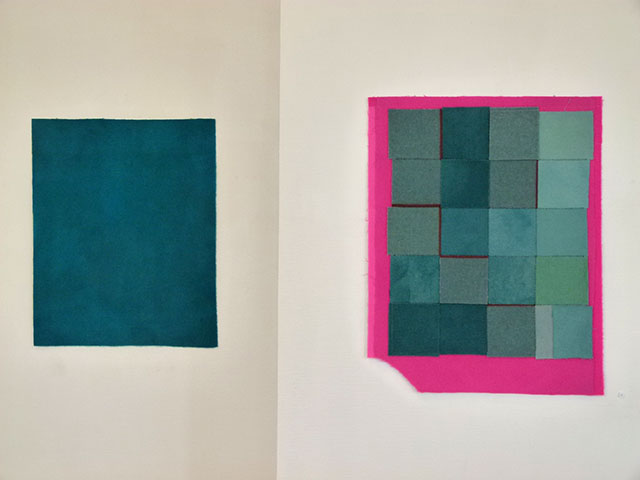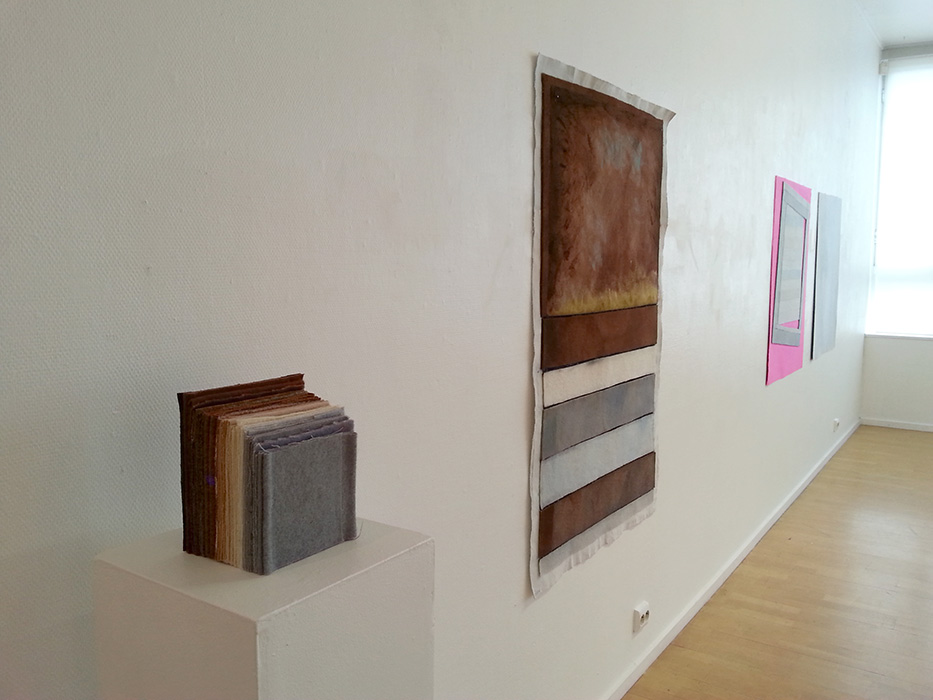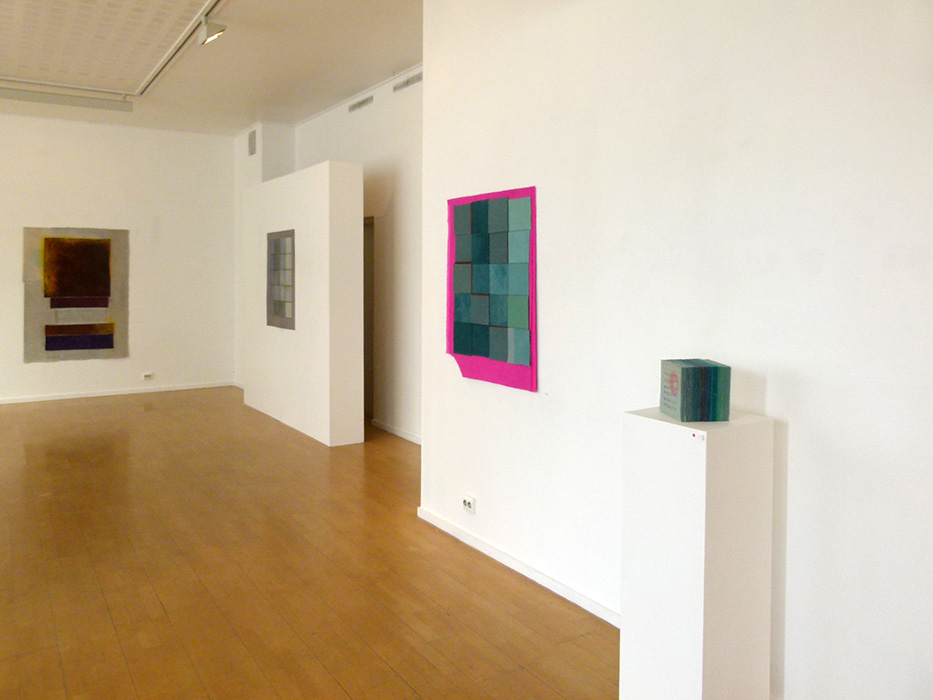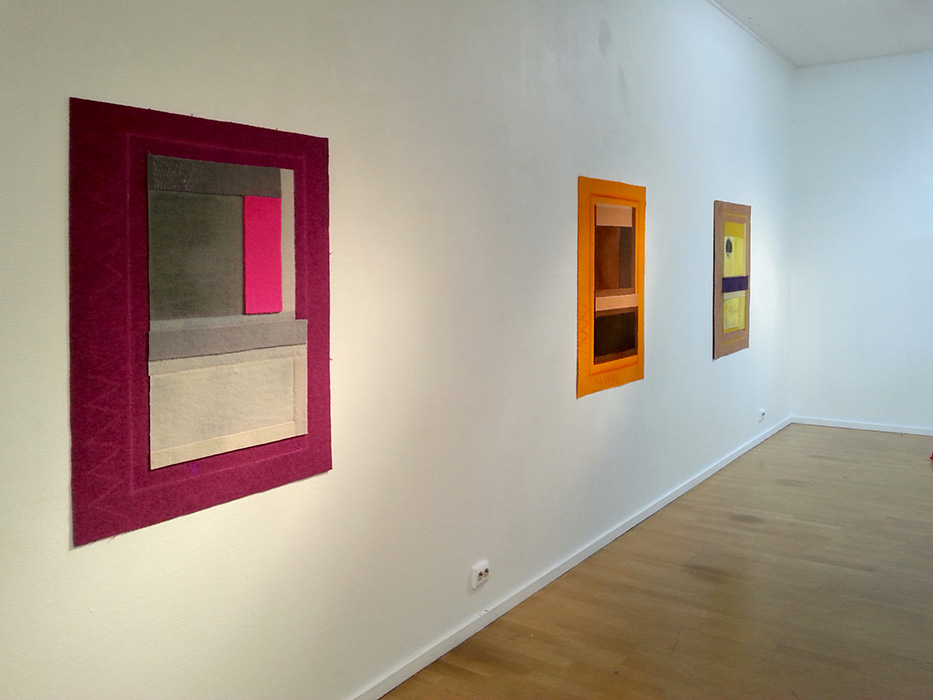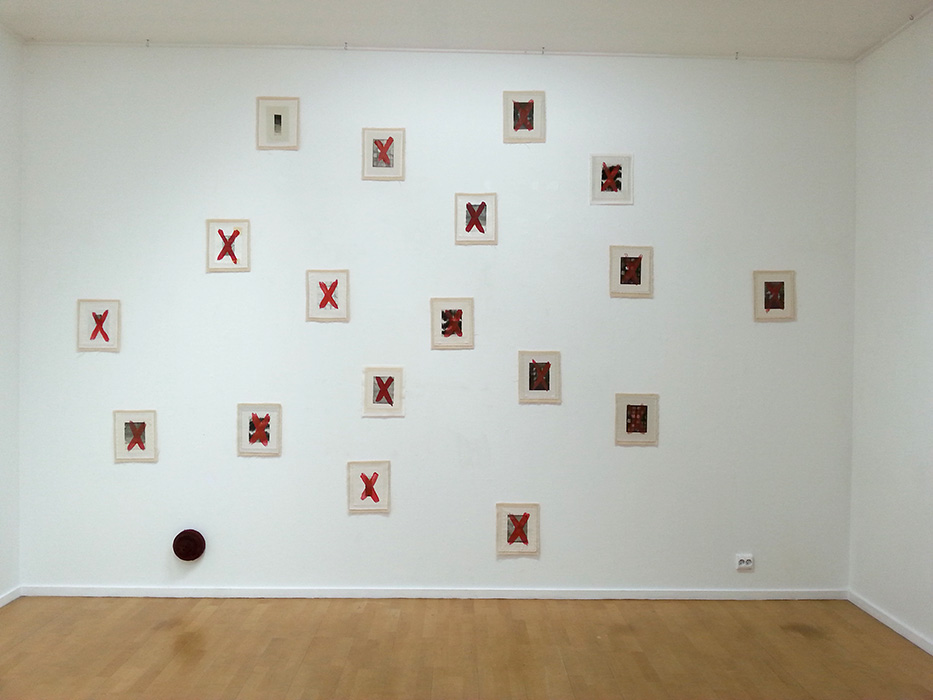The theme for the exhibition project is studies of Eva Hesse’s drawings.
The German/American Eva Hesse (1936-1970) was an unconventional and radical artist in New York in the 1960s. Hesse was taken up with absurdity in art and worked with soft and impermanent materials in sculptural forms. But during the last years of her life, from 1968 to 1970, she did a series of drawings on paper. It is these works that I have explored and taken motifs from. A kind of appropriation of Hesse’s work, executed in a textile material. In this transformation there lies a tribute – homage – to a female artist who represented a new trend of personal visions and who paved the way for other female artists. Eva Hesse had a brief and extraordinary career which was to have significance for several generations of artists.
How does one delve down into another artist’s work?
The project is a speculative study in form, colours, abstraction, energy, texture and the exploration of the potentialities of the materials. In other words, composition and expression. For me, this has been an attempt to develop and arrive at new angles of approach for creativity and image-formation. The project has given me much joy and energy.
It started as a kind of appropriation, but one where the textile material led the way. With a focus on the formal aspect, the content finds its expression in the composition. The tension between two colours, the relationship between colour and form. How form-elements and size change the picture surface. How different qualities of textiles communicate colour-energy, mood, state. How does one construct compositions that emphasise the sensual quality of the material? The textile material is connected to gender and identity – for better or worse. Historically speaking, I am fascinated by female artists and feminism in art. The way into my pieces has a reference to, and has as its point of departure, my inheritance in textiles, experience, education and a long life as a textile artist. This is a project which combines my engagement both as a textile artist and as an art historian.
The dyeing of woollen material is an important part of the working process. A recycling of old woollen army blankets provides a reference to theme and motif. The technique varies: dyeing, etching colours, monotype, collage, pastel crayons and hand-sewing/embroidery.
Runa Boger



